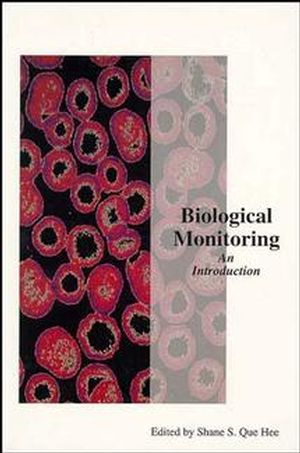Biological Monitoring: An IntroductionISBN: 978-0-471-29083-4
Hardcover
672 pages
June 1993
 This is a Print-on-Demand title. It will be printed specifically to fill your order. Please allow an additional 10-15 days delivery time. The book is not returnable.
|
||||||
This definitive source provides practicing professionals and
students in the occupational, environmental, and public health and
safety fields with the functional basics of biological monitoring.
The author examines how environmental exposures to particular
chemicals are related to concentrations of markers in body tissues
and fluids. Biological Monitoring integrates the applied sciences
of industrial/environmental hygiene, epidemiology, public health,
occupational medicine, toxicology, biochemistry, and analytical
chemistry with the basic sciences to interpret the connections
between exposures and lifestyle/environmental influences, and their
effects on humans. This comprehensive introduction provides
dependable, detailed coverage of:
* monitoring for harmful substances in the workplace
* the benefits and limitations of testing for critical levels of toxic materials in bodily tissues and fluids
* state-of-the-art developments in biological monitoring
* a wide variety of toxic chemicals and selected physical agents
* immunoassays
* monitoring for HIV and AIDS
* importance of exposure routes
* the most up-to-date methods of health and medical surveillance
* the interpretation of adduct concentrations
* biological exposure indices
* biological monitoring of pesticides
* biological monitoring in the home and around hazardous waste sites
* and much more
This essential, compelling guide is the only inclusive and thorough introduction available. Biological Monitoring's rigorous, accessible, interdisciplinary approach makes this an invaluable reference and text for industrial and environmental hygienists, physicians, pharmacists, nurses, epidemiologists, toxicologists, laboratory technicians, chemical engineers, science graduate students, and the environmentally concerned.
* monitoring for harmful substances in the workplace
* the benefits and limitations of testing for critical levels of toxic materials in bodily tissues and fluids
* state-of-the-art developments in biological monitoring
* a wide variety of toxic chemicals and selected physical agents
* immunoassays
* monitoring for HIV and AIDS
* importance of exposure routes
* the most up-to-date methods of health and medical surveillance
* the interpretation of adduct concentrations
* biological exposure indices
* biological monitoring of pesticides
* biological monitoring in the home and around hazardous waste sites
* and much more
This essential, compelling guide is the only inclusive and thorough introduction available. Biological Monitoring's rigorous, accessible, interdisciplinary approach makes this an invaluable reference and text for industrial and environmental hygienists, physicians, pharmacists, nurses, epidemiologists, toxicologists, laboratory technicians, chemical engineers, science graduate students, and the environmentally concerned.



